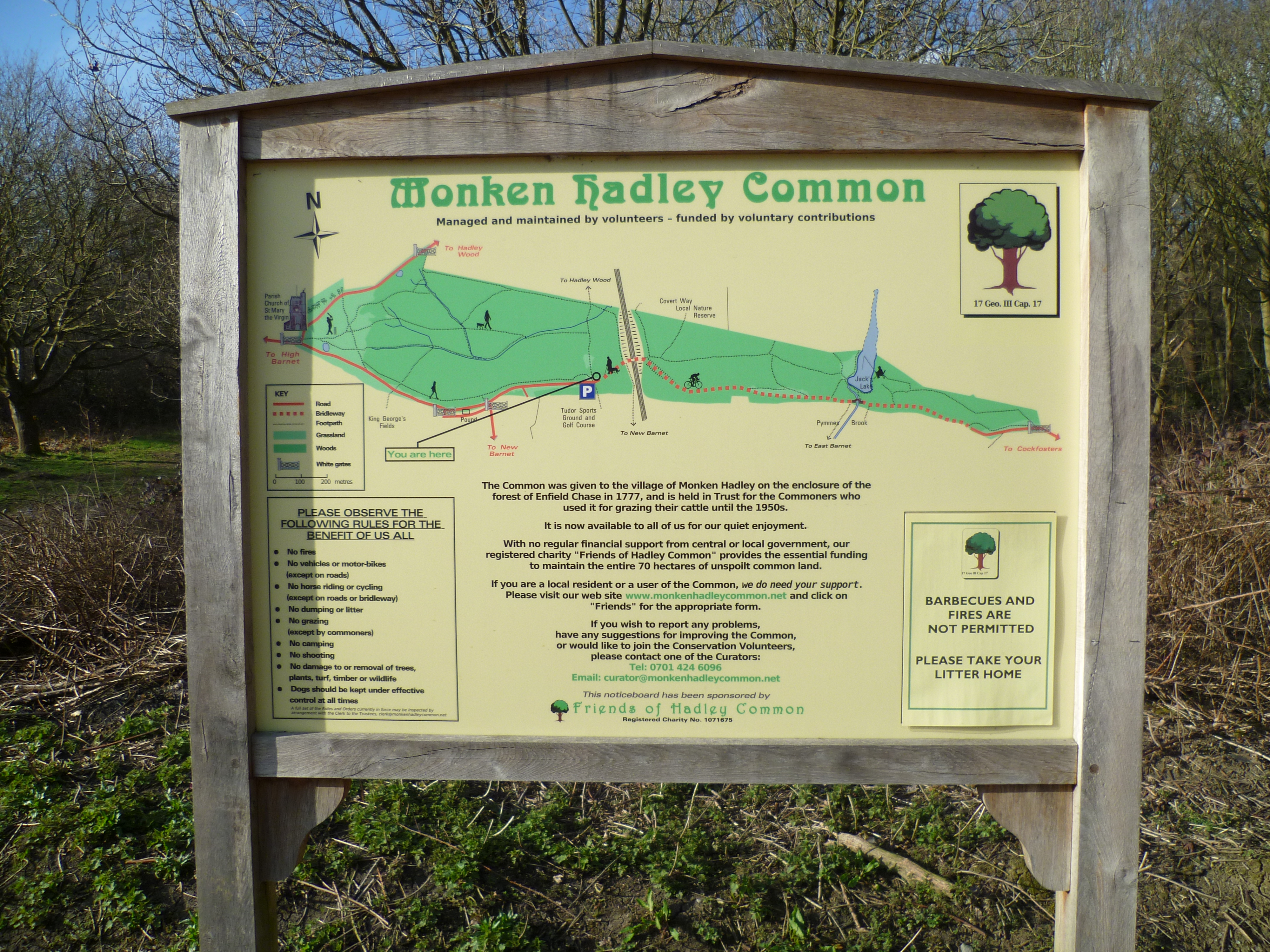Monken Hadley Common on:
[Wikipedia]
[Google]
[Amazon]

 Monken Hadley Common lies within the Monken Hadley Conservation Area, and is listed as a “ Site of Borough Importance for Nature Conservation, Grade I,” by the London Borough of Barnet. It is registered common land, and it is owned by the Trustees of Monken Hadley Common.
Monken Hadley Common lies within the Monken Hadley Conservation Area, and is listed as a “ Site of Borough Importance for Nature Conservation, Grade I,” by the London Borough of Barnet. It is registered common land, and it is owned by the Trustees of Monken Hadley Common.
Hadley Angling and Preservation Society
/ref> but supports common waterfowl and Daubenton's bats use it for feeding, foraging low over the water. Two smaller ponds have a much richer flora and abundant amphibians, which attract grass snakes.
File:Monken Hadley Common 1.JPG, Monken Hadley Common
File:Monken Hadley Common 3.JPG, Woodland on the Common
File:Jack's Lake, Monken Hadley Common.JPG, Jack's Lake
File:Folly Bridge, Monken Hadley Common.jpg, Pymme's Brook
Monken Hadley Common websiteMonken Hadley Common Act 2022 (c. ii)
{{Nature reserves in Barnet Nature reserves in the London Borough of Barnet Parks and open spaces in the London Borough of Barnet Common land in London Monken Hadley

Area
The common is a large area of about between Monken Hadley and Cockfosters; it is long and wedge shaped, wide at the Monken Hadley end and tapering to a point at the Cockfosters end.Access
There is access from Camlet Way, Parkgate Crescent, Covert Way, Games Road, Northfield Road, Baring Road (via Pymmes Brook Trail), Bakers Hill, and Hadley Common. The London Loop and Pymmes Brook Trail pass through the common.History
The Common is a remnant of the former Royal Forest of Enfield Chase, which was enclosed by an Act of Parliament of 1777. A small part was allotted to the village of Monken Hadley, and this is the only land which has remained as a common. Until the 1950s, the commoners exercised their rights to use the land for grazing. The common is bisected by the East Coast Main Railway Line.Habitat
The common is mostly wooded, dominated by pedunculate oak, with some hornbeam,beech
Beech (''Fagus'') is a genus of deciduous trees in the family Fagaceae, native to temperate Europe, Asia, and North America. Recent classifications recognize 10 to 13 species in two distinct subgenera, ''Engleriana'' and ''Fagus''. The ''Engle ...
and field maples. Holly forms a dense understorey in some places, while elsewhere a more diverse shrub layer
Stratification in the field of ecology refers to the vertical layering of a habitat; the arrangement of vegetation in layers. It classifies the layers (sing. ''stratum'', pl. ''strata'') of vegetation largely according to the different heights to w ...
includes Midland hawthorn and hazel
The hazel (''Corylus'') is a genus of deciduous trees and large shrubs native to the temperate Northern Hemisphere. The genus is usually placed in the birch family Betulaceae,Germplasmgobills Information Network''Corylus''Rushforth, K. (1999). ...
. Several ground flora species are ancient woodland indicators, suggesting that fragments have survived from before the time when the common was managed as wood-pasture. Butterflies include white-letter and purple hairstreaks, and there are breeding birds such as sparrowhawk and tawny owl.
Beech Hill Lake (or Jack's Lake) was formed by damming Pymme's Brook
Pymmes Brook is located in North London and named after William Pymme, a local land owner. It is a minor tributary of the River Lea. The brook mostly flows through urban areas and is particularly prone to flooding in its lower reaches. To a ...
. It is managed for angling/ref> but supports common waterfowl and Daubenton's bats use it for feeding, foraging low over the water. Two smaller ponds have a much richer flora and abundant amphibians, which attract grass snakes.
Gallery
See also
* Parks and open spaces in the London Borough of Barnet * Nature reserves in Barnet * LemmonsReferences
Further reading
*External links
Monken Hadley Common website
{{Nature reserves in Barnet Nature reserves in the London Borough of Barnet Parks and open spaces in the London Borough of Barnet Common land in London Monken Hadley